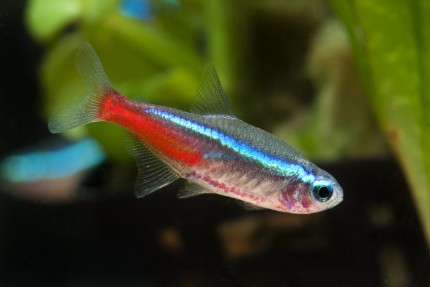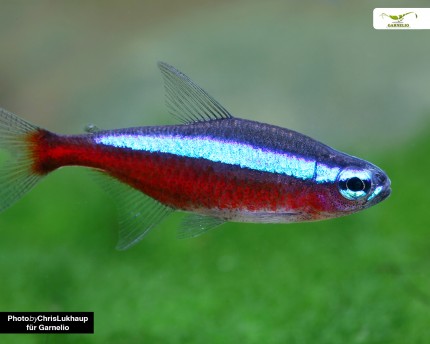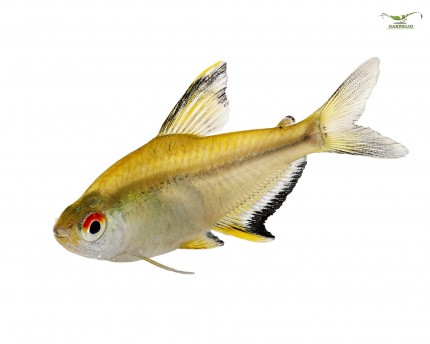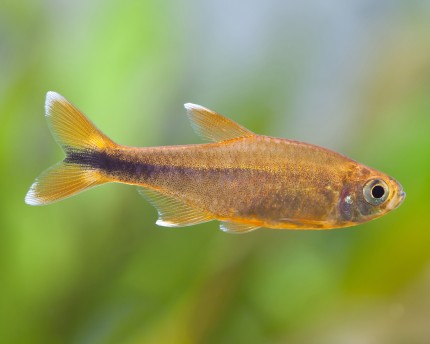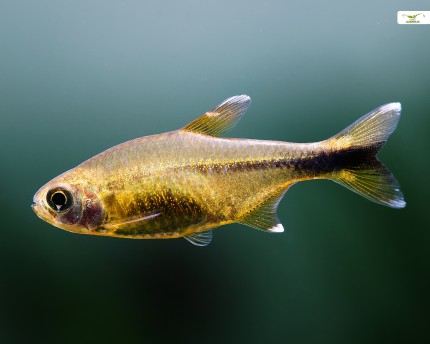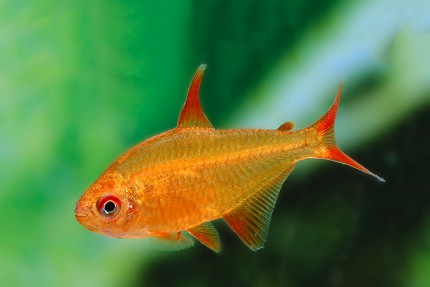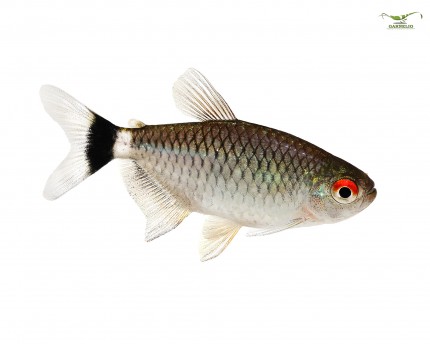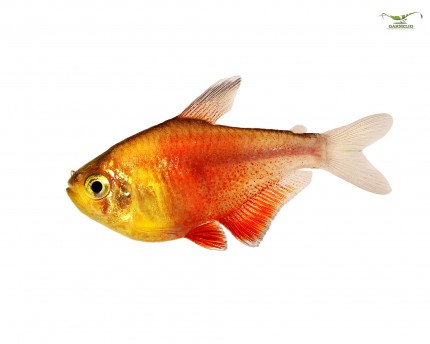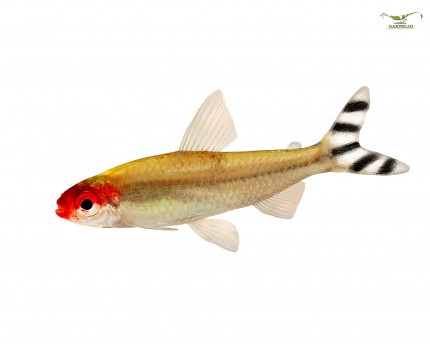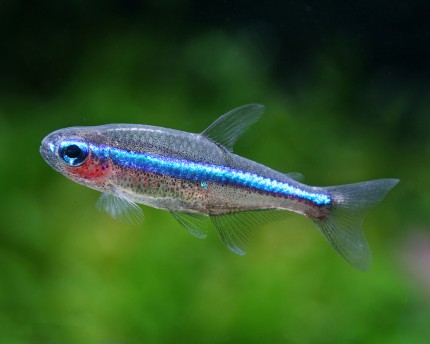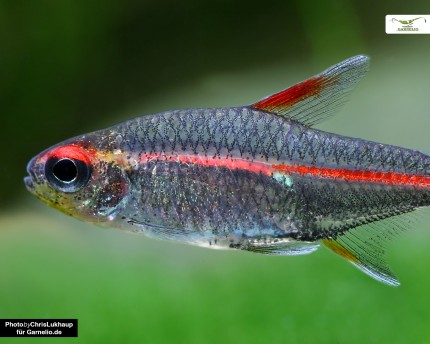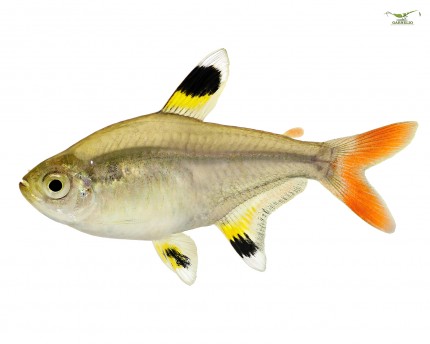South American tetras in nature
The tetras are an enormously extensive order of bony fishes. They include over 1900 species. There are huge predatory tetras and tiny schooling fish. There are many white wine-colored or champagne-colored fish, but also brightly colored jewels that catch the eye directly. Many mainly smaller species of tetras have made the leap into aquaristics and are even successfully bred in the hobby. Typically, tetras are rather elongated and laterally flattened in body shape, but we also have the high-backed species such as the Red of Rio or the Red-Blue Columbian. The Blackwing Hatchetfish takes it to the extreme with its body shape. It is perfectly adapted to its natural biotope. The body of the tetra is covered with scales. Tetras can be very easily identified by their adipose fin on the dorsal side - this small fin sits a small distance in front of the base of the caudal fin.
Because there are so many species of South American tetras, it is not possible to make a clear statement about the habitat - however, many species popular in aquaristics come from biotopes with soft, slightly acidic, humic-rich water. Many tetras come from biotopes with dense plant growth and/or many roots protruding into the water or dense tangles of alluvial wood, trunks and branches of fallen jungle trees.
The colorful iridescent species often originate from streams and rivers with almost tea-brown black water - their bright color stripes and spots help them not to lose touch with their conspecifics. Good examples are the Glow Tetra, and of course the bright Red Neon as well as the Blue Neon. During the night the hunters and other predators are active there, for this reason many tetras fade almost completely in the dark - if you turn on the aquarium lighting at night, you will notice that these fish look completely different than during the day! All this is not a reason for concern, it is a protective mechanism - fish that do not shimmer are not so well found by the hunter.
Behavior of South American Tetras
One of the few true schooling fish in freshwater is the Redhead Tetra from South America. The other tetra species also gather into a shoal when they are in danger or stressed, when they are relaxed they disperse into small groups or are completely individual. During the mating season, some tetra species can even claim small territories for themselves in the aquarium.
Tetras from South America in the aquarium
In a well planted, not too bright aquarium South American tetras feel comfortable. Sufficient swimming space in the middle should be available, most tetras are very fond of swimming. The majority of South American tetras originate from streams with black water or soft clear water with a pH in the rather low, acidic range. Tetras are therefore often a good choice for soft water aquariums and planted aquariums. Many aquarium plants also prefer soft to medium hard water. Adding humic substances to the water is definitely advisable, their importance in aquaristics has been underestimated for a long time and it is only slowly coming to light how important humic substances actually are for our aquarium fish.
Breeding tetras in the aquarium
In the community aquarium the breeding of tetras is rather difficult, in a separate breeding aquarium it is more possible. Here, you place the ornamental fish in pairs or with some excess females and initially condition them with rich, high-quality live food. The water in the breeding aquarium should be soft and rather acidic. Large water changes simulate the onset of the rainy season, which is usually a trigger for courtship and mating in the fish. As free spawners, tetras simply drop their spawn into the water where the eggs sink to the bottom. A layer of large pebbles or mosses and other fine plant pads prevent the adult fish from eating their eggs posthaste. After spawning, catch the adult fish back out of the rearing tank so that the spawn and later the fish larvae do not end up as food. After free-swimming, provide the baby tetras with fine live foods such as slipper lizards and, later, artemia euplii.
Socialization of South American tetras
Most tetras are lively and eager swimmers. Therefore, they are ideally socialized with similarly lively, agile fish. Ideally, South American tetras fit into South American aquariums of appropriate size, where they can share the habitat with catfish from appropriate habitats and South American cichlids. Depending on the size of the tetra, young shrimp in particular tend to be expensive live food, but there are also small tetra species that will leave the shrimp alone once they reach a certain size. Dwarf crayfish can usually be socialized well with the more surface or mid-aquarium oriented tetras, but large crayfish or crabs would injure or even eat the aquarium fish.
Feeding South American tetras
Contrary to the assumption that all tetras are pure hunters and carnivores, some species are omnivores. You can find more information about this in our article descriptions. With high-quality live food you do something good for the fish in any case! As main food for all omnivorous South American tetras in the aquarium our NatureHolic main feed is suitable.
Conclusion
No South American aquarium without tetras! These attractive colorful jewels are just perfect for an aquarium with soft to medium hard water, and some species can even be kept in hard water. Lively playing colorful fish among green aquatic plants - watching them relaxes and brings us friends in our hobby, aquaristics. In Garnelio's online store you can buy healthy, vital tetras from South America in high quality.

